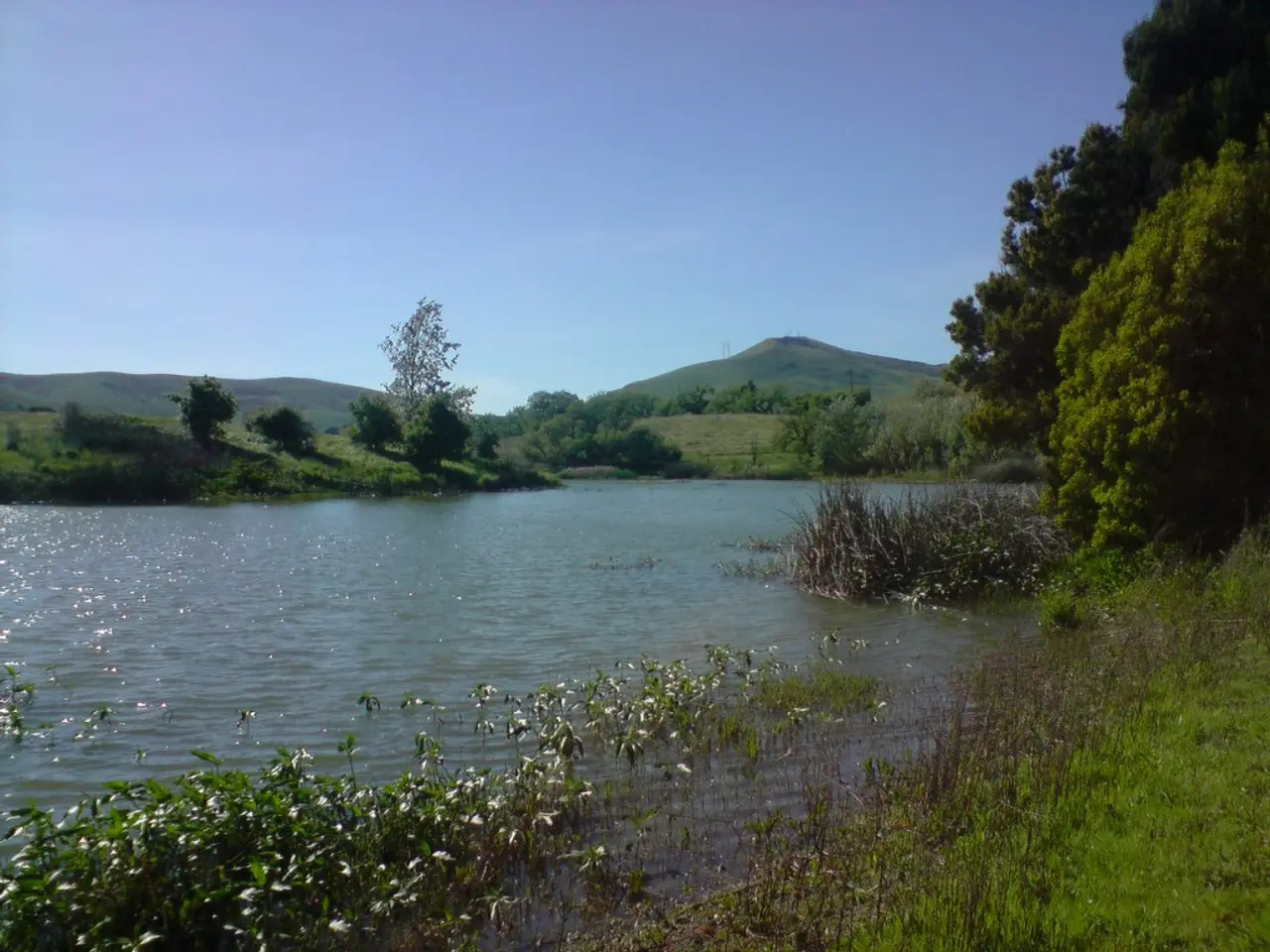Climate change's potential threats to the Rhine river
**High Water Temperatures in the Rhine River Pose Significant Risks**
The summer of 2021 has seen unusually high temperatures, and this trend is particularly concerning for the Rhine River. As temperatures rise, the consequences for the river's ecosystem, industries, and infrastructure become increasingly critical.
Climate change is exacerbating these conditions, with rising temperatures and decreased water availability becoming more common. This year, the Rhine has already experienced record-breaking high temperatures, similar to the 2003 heatwave when the river reached 25 degrees for 72 consecutive days.
The ecological impact of high water temperatures is significant. Aquatic flora and fauna are at risk due to reduced oxygen levels, with power plants like Beznau in Switzerland reducing operation or shutting down partially to avoid discharging overheated water that could endanger river wildlife.
Transport on the Rhine is also being disrupted. Low water levels coupled with high temperatures have caused drought-like conditions that narrow river routes, halving shipping capacity. This disruption affects logistics and supply chains, leading to increased freight costs and economic instability in the region.
In addition to the direct impacts, high water temperatures can lead to water scarcity. Climate change increases evaporation and decreases rainfall, leading to record low water levels and hydrological droughts not seen before at this time of year in places like Poland and Hungary. These conditions indicate similar risks for the Rhine basin.
While there is no strict numerical warning system for Rhine water temperatures, the shutdown of nuclear plants like Beznau due to high river temperatures signals a critical threshold where ecological and industrial safety is compromised. Hydrologists and environmental agencies closely monitor river levels and temperatures, with records being broken and forecasts predicting further drops.
Climate change is a major factor in these conditions. Europe warms twice as fast as the global average, intensifying heatwaves that drive high water temperatures and low flows. Under warming scenarios, drought frequency and severity could increase up to sevenfold in many regions, including Europe, further threatening the Rhine’s water availability and temperature balance.
Human activities such as irrigation, water withdrawal for cooling, and land use further strain river water resources, compounding drought and heat impacts intensified by climate change. This underscores an urgent need for adaptive water management and climate action to mitigate escalating risks.
The Rhine River's ecosystem is under significant stress, with fish and mussels particularly vulnerable. Experts are examining how the temperature might develop in the long term using a Rhine water forecasting model. Samples taken half a meter below the water surface flow directly to the Rhine Water Research Station in Mainz-Wiesbaden.
There are four warning levels for high water temperature in the Rhine. The fourth warning level is triggered when the water temperature of the Rhine exceeds 29 degrees. When the Rhine in Mainz exceeded 25 degrees on June 30th, the first warning level was triggered, and industrial companies were asked to take precautionary measures. The Rhine River in Mainz reached a temperature of 27.4 degrees on July 2nd.
As the summer progresses, it is crucial to monitor these conditions closely and take action to protect the Rhine's ecosystem and ensure the stability of industries and infrastructure. Climate change means there will be more frequent and longer-lasting heat periods, which will have strong effects on rivers and their ecosystems. Adaptive water management and climate action are essential to mitigate these risks and ensure the health and sustainability of the Rhine River.
- The rising temperatures and decreased water availability, driven by climate change, are also affecting other areas, such as health-and-wellness, mental-health, and environmental-science, as they could lead to increased water scarcity across Europe.
- The high water temperatures in the Rhine River have vital implications for adjacent environments, including aquatic flora and fauna, since the escalating temperatures could potentially threaten other water bodies, causing a domino effect within the environmental-science realm.
- Apart from the ecological issues, the disruptions in transport and logistics caused by high water temperatures and low water levels highlight the need for infrastructural adaptations in science fields like health-and-wellness and industry, to ensure resilience against climate-change impacts.




